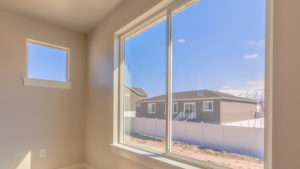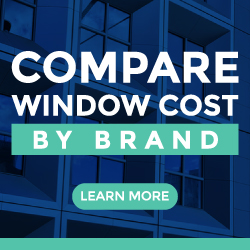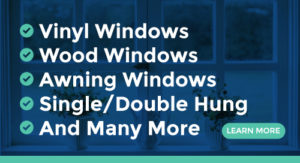
How Much Should You Budget for New Windows in 2024?
As we edge closer to 2024, it’s an opportune moment to consider giving your home a fresh outlook – quite literally – with new windows. Updating your windows can be a game-changer for both aesthetics and energy efficiency. But one question looms large: how much should you realistically budget for this upgrade? Let’s break it down in a friendly, easy-to-understand way, just like we’d explain it to a neighbor over the fence.
The Importance of Budgeting for New Windows
Think of new windows as both a cosmetic facelift and a practical investment for your home. They can change the look of your house and also save you money on energy bills. But, like planning any home renovation project, setting a realistic budget is crucial to avoid any unpleasant surprises.
Understanding the Basic Costs
Average Price Range
The cost of new windows varies widely based on several factors, including the type of windows, materials, and the complexity of installation. As a ballpark figure, you might encounter anything from a few hundred to a couple of thousand dollars per window.
Factors Influencing Cost
- Type of Window: Are you looking at double-hung, casement, or picture windows? Each has different pricing.
- Material: Common materials include wood, vinyl, and fiberglass, each with its own price tag.
- Size and Customization: Larger windows or custom shapes and sizes typically cost more.

Additional Costs That Can Add Up
Installation
This is where a significant portion of your budget can go. Professional installation ensures your windows are correctly fitted, which is key to their performance and longevity. The cost will vary depending on the complexity of the installation and local labor rates.
Energy Efficiency Features
Energy-efficient windows can cost more upfront but save you money in the long run. Features like double or triple glazing, low-E coatings, and inert gas fills might add to the cost but can reduce energy bills and improve indoor comfort.
Extras and Aesthetic Additions
Things like between-the-glass blinds, stylish frames, or specialized glass can elevate the look of your windows but will also increase the price.
Setting a Realistic Budget
Research and Quotes
Start by doing a bit of research. Get quotes from different suppliers and installers to gauge the market rates. Remember, the cheapest option isn’t always the best in terms of quality and longevity.
Prioritize Needs Over Wants
Decide what’s essential for your windows and what falls into the ‘nice-to-have’ category. Energy efficiency might be a must, but perhaps you can compromise on some of the aesthetic features to stay within budget.
Consider Financing or Phased Installation
If the ideal windows are beyond your current budget, consider financing options or installing the windows in phases, rather than all at once.
Don’t Forget the Hidden Benefits
Increased Home Value
New windows can boost your home’s curb appeal and resale value. This aspect makes them not just a cost but an investment in your property.
Long-Term Savings
Energy-efficient windows can significantly reduce heating and cooling costs, leading to substantial savings over time.
Budgeting for new windows in 2024 involves a careful evaluation of costs, a clear understanding of your needs, and a bit of strategic planning. By considering all the factors – from basic costs to installation, energy efficiency, and additional features – you can set a realistic budget that aligns with your home improvement goals.

Exploring Different Types of Windows and Materials
As you contemplate upgrading your windows in 2024, understanding the various types and materials available is key. Each type and material comes with its own set of benefits, drawbacks, and costs. Let’s dive into the world of windows, exploring the options and what makes each of them unique.
Types of Windows
Double-Hung Windows
- Features: Double-hung windows have two sashes that slide up and down, offering excellent ventilation.
- Cost: They are generally mid-range in price, depending on the material and size.
- Ideal For: Classic aesthetics; they suit a variety of home styles.
Casement Windows
- Features: Hinged at the sides, casement windows open outward with a crank. They offer superior ventilation and sealing.
- Cost: Similar to double-hung windows but can be more expensive with high-end materials.
- Ideal For: Areas where you want to capture breezes, like kitchens or bathrooms.
Picture Windows
- Features: These are large, fixed windows that don’t open. They offer expansive views and natural light.
- Cost: Generally less expensive since they have no mechanical parts, but the cost rises with size and glass type.
- Ideal For: Living rooms or spaces where you want an unobstructed view.
Bay and Bow Windows
- Features: Protruding from the house, these windows create extra space and capture light from different angles.
- Cost: On the higher end due to their size and complexity.
- Ideal For: Adding architectural interest and creating cozy window seats.
Sliding Windows
- Features: Sliding windows open horizontally and are easy to operate, offering a contemporary look.
- Cost: Typically less expensive than double-hung or casement windows.
- Ideal For: Modern homes and spaces with limited outside clearance.
Window Materials
Vinyl
- Pros: Low maintenance, good insulation, affordable.
- Cons: Limited color choices; can warp under extreme temperatures.
- Cost: Generally the most budget-friendly option.
- Why Choose Vinyl: Excellent choice for energy efficiency and affordability.
Wood
- Pros: Classic beauty, excellent insulator, customizable.
- Cons: Higher maintenance; can be prone to rot and warping.
- Cost: On the higher side, especially for high-quality or custom woods.
- Why Choose Wood: Ideal for traditional aesthetics and natural insulation.
Fiberglass
- Pros: Very durable, low maintenance, can mimic the look of wood.
- Cons: More expensive than vinyl.
- Cost: Higher than vinyl but offers longevity.
- Why Choose Fiberglass: Great for those seeking durability and minimal upkeep.
Aluminum
- Pros: Strong, lightweight, and modern.
- Cons: Less energy-efficient than other materials.
- Cost: Generally more affordable than wood but more expensive than vinyl.
- Why Choose Aluminum: Suitable for contemporary designs and large window setups.
Composite
- Pros: Combines the benefits of wood and vinyl; durable and energy-efficient.
- Cons: Can be costly.
- Cost: Higher than vinyl, comparable to high-quality wood.
- Why Choose Composite: A robust, long-lasting option that offers the aesthetics of wood.

Making the Right Choice
When choosing the type and material for your windows, consider not just the cost, but also the style of your home, the climate you live in, and your energy efficiency needs. It’s about finding the right balance between aesthetics, functionality, and budget.
For instance, if you’re in a coastal area, you might prioritize durability and opt for fiberglass. In a historic home, classic wood windows might be more appropriate. If budget is a primary concern, vinyl offers a great mix of affordability and performance.
Choosing new windows involves a blend of design preference, practical requirements, and budget considerations. As 2024 approaches, updating your windows can not only enhance the look of your home but also improve its energy efficiency and functionality.
Assessing the Number of Windows Needed for Replacement
When it comes to replacing windows in your home, one of the first questions that might come to mind is: how many windows do I actually need to replace, and should I do them all at once? This decision can significantly impact both the project’s scope and your budget. Let’s chat about how to determine the number of windows you may need and whether to replace them all at once.
Evaluating Your Current Windows
- Home Inspection: Start with a thorough inspection of your current windows. Are they showing signs of wear like drafts, condensation, or difficulty in opening and closing?
- Energy Efficiency: Consider their energy efficiency. Older, single-pane windows might be causing higher energy bills.
- Aesthetic Consistency: If you’re updating for style, replacing all windows ensures a uniform look, which is particularly important for curb appeal.
The Cost Per Window
- Varied Pricing: The cost per window can vary widely based on type, material, size, and additional features like energy-efficient coatings or custom designs. On average, you might find prices ranging from a few hundred to over a thousand dollars per window.
- Installation Costs: Remember, the per-window cost isn’t just about the unit itself. Installation costs can add significantly to your budget and may vary depending on the complexity of the installation.
Should You Replace All Windows at Once?
Pros of Replacing All Windows Together
- Uniformity in Appearance: All windows will have the same style, age, and wear, which can enhance your home’s aesthetic appeal.
- Bulk Purchase Savings: Sometimes, you might get a better deal when purchasing multiple windows at once.
- Energy Efficiency: Replacing all windows together can maximize energy efficiency, leading to more significant savings on heating and cooling costs.
Cons of Replacing All Windows Together
- Higher Upfront Costs: Replacing all windows at once can be a substantial financial investment.
- Potential Waste: If some windows are still in good condition, replacing them might be unnecessary.
Making the Decision
- Budget Considerations: Review your budget to determine if replacing all windows at once is feasible. Sometimes, spreading the cost over several years can make the project more manageable.
- Prioritize Based on Need: If budget constraints don’t allow for a full replacement, prioritize windows based on their condition. Replace the most deteriorated ones first.
- Long-Term Planning: Consider the long-term benefits of energy savings and property value enhancement when deciding.
Determining the number of windows you need to replace and whether to do them all at once depends on a careful assessment of your current windows’ condition, your budget, and your long-term home improvement goals. Each home and situation is unique, so weigh the pros and cons to make a decision that aligns with your needs and financial situation.

Average Cost Per Window
- Basic Vinyl Windows: On average, vinyl windows can range from $300 to $600 per window. These are typically the most budget-friendly options.
- Wood Windows: For wood windows, the price tends to be higher, usually between $600 and $1,000 per window, depending on the quality and design.
- Fiberglass or Composite Windows: These can range from $500 to $1,200 per window. They offer a balance between durability and aesthetic appeal.
- High-End or Custom Windows: For high-end materials or custom designs, prices can easily exceed $1,200 or more per window.
Installation Costs
- Standard Replacement: For standard replacements, installation costs can range from $100 to $300 per window. This varies based on the complexity of the installation and local labor rates.
- Full-Frame Replacement: If a full-frame replacement is required (where the entire window and frame are replaced), installation costs can increase to $200 to $500 per window.
Should You Replace All Windows at Once?
- Cost for Full Home Replacement: For a typical home with 10 to 15 windows, replacing all windows at one time could cost anywhere from $3,000 to $15,000 for standard vinyl windows, and potentially more for higher-end options.
- Potential Bulk Discounts: Some suppliers or installers may offer discounts for larger projects, so replacing all windows at once could potentially bring down the per-window cost.
Balancing Cost and Need
- Phased Approach: If replacing all windows at once is not feasible, you might spend around $3,000 to $6,000 to replace a smaller number initially, focusing on the most deteriorated ones, and then budget for the remaining windows in the following years.
- Long-Term Investment: Remember, while the upfront cost can be significant, new windows are a long-term investment in your home’s value and energy efficiency.
The decision to replace windows and how many to replace involves a careful evaluation of your needs, the condition of your current windows, and your budget. With average costs in mind, you can make a more informed decision about this important investment in your home.

Energy Efficiency: A Key Factor in Budgeting
Understanding Energy Savings
When considering new windows, it’s important to think about energy efficiency. Windows with good insulation properties can significantly reduce your heating and cooling costs. While energy-efficient windows might cost more upfront, they can offer substantial savings in your utility bills over time. It’s a bit like buying an efficient car – you pay more at the dealership, but you save on gas down the road.
The Role of Window Ratings
Look for windows with ENERGY STAR ratings or high R-values, which indicate better insulation and energy efficiency. Consider this an investment in both your home’s comfort and your long-term energy costs.
Aesthetic and Home Value Considerations
Boosting Curb Appeal
New windows can dramatically enhance the look of your home, boosting its curb appeal. Whether you’re planning to sell your home soon or just want to enjoy a refreshed look, the aesthetic value of new windows is a significant factor.
Matching Your Home’s Style
Consider the architectural style of your home when choosing windows. The right style can complement your home’s character, while the wrong one can look out of place. It’s like choosing the right outfit for a special occasion – it should fit well and reflect your style.

Long-Term Durability and Maintenance Costs
Material Longevity
Different window materials have different lifespans and maintenance requirements. For instance, vinyl windows are low maintenance and durable, while wood windows might require more upkeep but offer a classic look. Think of it as choosing between different types of flooring – each has its own care routine and longevity.
Future Maintenance
Factor in the long-term maintenance costs of your chosen windows. Some materials may require regular painting or treatment, while others might only need occasional cleaning.
Sound Insulation and Home Comfort
Noise Reduction
If you live in a busy area, the sound insulation properties of your new windows can be a game-changer. Well-insulated windows can block out noise, creating a more peaceful and comfortable home environment.
UV Protection
Some windows offer UV protection, preventing your furniture and fabrics from fading. It’s like applying sunscreen to protect your skin – in this case, you’re protecting your home interiors.
Financing Options and Rebates
Exploring Financial Assistance
Check if there are financing options, rebates, or tax credits available for window replacements, especially for energy-efficient models. This can make your investment more affordable.
Understanding the ROI
Consider the return on investment (ROI). Quality windows can have a high ROI in terms of energy savings and increased home value. It’s like investing in a good home security system – it offers peace of mind and can pay off in the long run.
As we head into 2024, upgrading to new windows can be a wise decision for your home. By considering factors like energy efficiency, aesthetics, durability, sound insulation, and financial aspects, you can set a realistic budget that aligns with your home improvement goals. Remember, this investment not only enhances the look and comfort of your home but also contributes to its long-term value.
Compare Prices

Leave a Reply